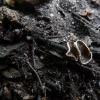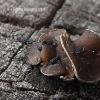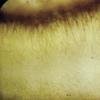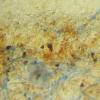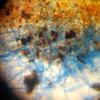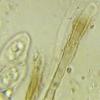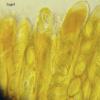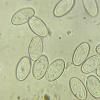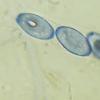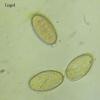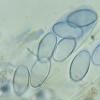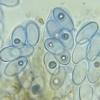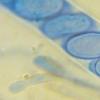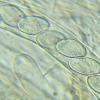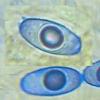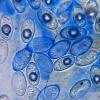
18-05-2022 09:10
Mirek GrycHello everyoneA few days ago I found a small ascom

13-07-2022 10:48
 Nicolas VAN VOOREN
Nicolas VAN VOOREN
Hello.I'm searching for the following paper:Mülle

13-07-2022 06:14
Juuso ÄikäsI inspected a boggy depression at the side of a fo

11-07-2022 15:32
Thomas Læssøehttps://svampe.databasen.org/observations/10216745

12-07-2022 16:30
 Riet van Oosten
Riet van Oosten
Hello,Found in 2018 by Willy Heimeriks.Not many do

11-07-2022 10:11
Thomas Læssøehttps://svampe.databasen.org/observations/10279374

12-07-2022 07:46
 Edouard Evangelisti
Edouard Evangelisti
Dear all,I am wondering if you could advise on the

11-07-2022 18:41
François BartholomeeusenGood evening to all,At the dried out edge of a swa

11-07-2022 09:50
 Hans-Otto Baral
Hans-Otto Baral
Hello does someone have access to the following p
A few days ago I found a small ascoma on the edge of the fire (max. 4 mm in diameter). I am not sure if they are mature so I still grow them. I will try to get free spores and complete the documentation, meanwhile I post a few photos with the hope that someone will recognize this species. I apologize for the poor quality of the photos but I tried not to damage the ascomat, the more that the species is completely unknown to me.
multiguttulate ascospores:
(11.1) 11.3 - 12.4 (12.9) × (6.3) 6.4 - 7.2 (7.5) µm
Q = (1.6) 1.7 - 1.88 (1.9); N = 12
Me = 12 × 6.7 µm; QE = 1.8
I have the impression that they are surrounded by a jelly cover? For now, I can't clearly determine the character of ascospores, maybe I will be able to do it after obtaining free spores?
I did not observe any reaction to iodine.
All suggestions are welcome.
Regards
Mirek

I would consider an immature Ascobolus carbonarius. Let's see how the spores mature.
Viktorie
I took him into consideration but too many features do not match him. I studied this species several times and seems different to me?
However, I do not rule out anything. I have a very unfavorable podoga. At night, even today, the temperature dropped below zero. Besides, rain is missing!
Thank you for the hint. I will try to show the features of how ascomata will mature.
Regards
Mirek

I don't think it was an Antrocobia species.
The most interesting thing is that I can't adjust my collection to any kind. I no longer take into account the negative reaction to iodine which can sometimes be quite capricious. I had several Peziza collections that did not react to iodine at all, so there may be a similar situation here.
My ascomat has no hair. What can be seen in the pictures is more like rhizomorph and occurs at the bottom of ascomata.
Regards
Mirek
I see a lot of common features from Pseudombrophila porcina.
What do you think about it?
P. disciformis will probably be a better proposition :)
Mirek

On the 16th photo, we can see the polar warts and some fine ridges on the surface. Yhe hyphoid hairs on the external surface are also a typical characters of Pseudombrophila spp.
Brummelen (1995) indicated the paraphyses to be swollen, but this is not really evident on your pics.
Very interesting collection of this very rare species!
Watching the last sample, I noticed a delicate ornamentation in the form of an irregular mesh on spores.
Yes, you are right, the paraphyses peaks do not completely match. I haven't observed so far that they were thicker?
Also, the spores from the last sample is too small in relation to what Brummelen gives.
I did not download a few younger ascomat in the hope that maybe they would grow. However, I doubt that this happens, it is very dry :(
The one I downloaded I still hold alive, I have to see as mature as possible.
I think the sequences of this species have not yet been made? If you were interested in you, I will gladly send some of the collection. It is not much, but for research it should be enough.
It would also be nice to see spores under an electron microscope, unfortunately I do not have such a possibility.
In fact, this is a rare species so it would be good to use it as much as possible.
Regards
Mirek

You can send to me a part of it.
(12.7) 12.8 - 13.6 (14.3) × (6.4) 6.5 - 7.3 (7.6) µm
Q = (1.7) 1.8 - 2; N = 9
Me = 13.2 × 6.9 µm; QE = 1.9
13.29 6.53
12.66 7.59
12.82 6.44
13.18 7.26
12.90 6.53
13.61 6.88
13.38 6.96
13.04 6.64
14.25 7.14
Now, making sure that identification is correct, I can send to the sequence. I have a few more photos.
Nicolas, you will receive only one fruiting bodies. The one I have recently gathered, but he was missing. Careless movement of my hand and fell off my desk, the search did nothing :(
Regards
Mirek
